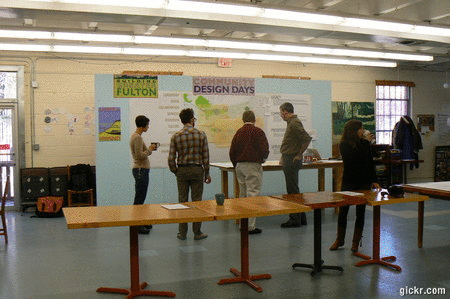
When I facilitate large groups – especially around personality preferences – I usually mention the curious path that led me to a career designed for energetic extraverts. That curious path was, essentially, a very direct path.
I was happily plugging along in my communications job at Luck Stone – hammering out the employee magazine and videos and HR manuals – when my boss at the time, Tammy Cummings, popped into my office.
“We’ve been asked to roll out an intensive customer service training program to every employee this summer,” she said. Luck Stone at the time had about 800
employees.
“That’s nice,” I replied, as I typed away.
“Since we only have one person on staff that does training, you’re going to spend some time delivering the program in the field,” she continued.
“No, I’m not,” I opined, barely looking up. “I don’t do well with groups.”
“Do you want to have a job at the end of the summer?” she asked.
“I’d love to awkwardly stand in front of groups of truck drivers and mechanics and deliver this training program,” I said after a pause, “especially if it involves leading them through an activity called ‘Build Your Customer Service Superhero’ using construction paper and glue.”
That summer, I co-facilitated over 60 days of stand-up training, including one very bumpy session in western Virginia where those truck drivers and mechanics
went into open revolt as I passed out the construction paper. “I haven’t played with colored paper since kindergarten,” one employee said in a tone of voice that
suggested he didn’t have plans to break that particular streak.”
I learned a lesson in adaptability that day.
And over that summer more than a decade past, I began to discover how to facilitate large groups of people through a wide variety of activities and discussions. I learned how to listen, how to ask better questions, when small groups work better than large groups, and how to move difficult conversations forward.
Those first few months and years, I would come home exhausted after a full day of facilitating. An extreme introvert, I would expend all of my energy being in
the moment and engaged with a group – and then go home and almost literally watch the paint peel from the wall. My wife knew not to ask me how my day went, or tell me how hers went, or ask what I wanted for dinner, until I’d had several hours of severe, introverted quiet.
Over time, I learned to strengthen my ability to adapt my style, and to better understand how to facilitate in ways that actually recharged my battery. Working
with groups became a pleasure and a passion, not a task, and it has since become a career.
In early February, I facilitated six straight days of employee discussions, training and workshops at the Library of Virginia, the Virginia Credit Union and the Visual Arts Center of Richmond – 35 hours of group interaction with well over 100 people in total. When I came home from the last session, Nikole asked me how my day went, told me how hers was and asked me what I wanted for dinner. And I even had enough energy to play with Thea.
Thanks for the push, Tammy.







